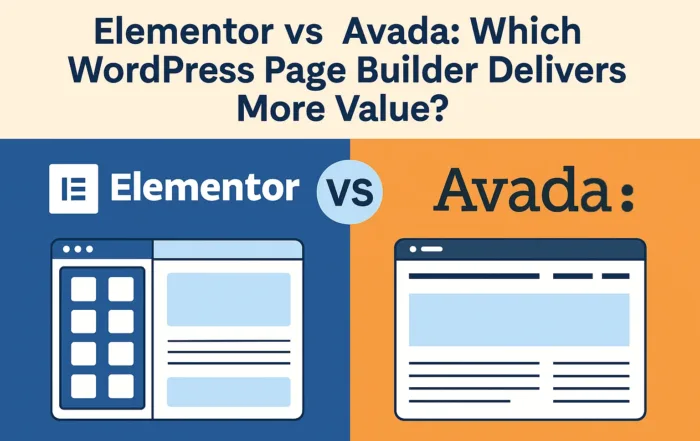
WordPress vs Drupal: Which Platform Should Ex-Joomla Users Choose?
Date Posted:
April 28, 2025
Share This:
The decision to move from Joomla doesn’t end with recognizing the need for change. You’re now faced with selecting your next digital foundation—a choice that will impact your organization’s online presence for years to come. WordPress and Drupal stand as the two leading alternatives, but their approaches to content management differ significantly.
Market Position and Adoption Trends
WordPress currently dominates with 43.2% of the CMS market while Drupal holds 3.8%. This gap has widened over the past five years, with WordPress gaining 7.2 percentage points while Drupal has remained relatively static. This trend matters because platform popularity directly influences available resources, support options, and long-term viability.
Developer availability reflects this market reality. A recent tech hiring survey revealed that WordPress developers outnumber Drupal specialists by a ratio of 8:1 in most markets. This translates to more competitive rates and faster project turnaround times for WordPress implementations. WordPress users also benefit from access to modern design systems like Avada, accelerating project launches and reducing overall development friction.
Content Structuring Capabilities
Drupal excels in content complexity management. Its robust taxonomy system and content type architecture provide unparalleled flexibility for websites with intricate content relationships. This makes Drupal particularly valuable for organizations with complex data structures or those requiring sophisticated content access controls.
WordPress has evolved significantly beyond its blogging origins. The introduction of custom post types and the block editor has narrowed the gap with Drupal. However, WordPress still employs a more straightforward approach to content creation that prioritizes speed and accessibility over complex content modeling.
Learning Curve and Team Adaptability
For teams coming from Joomla, WordPress typically offers a gentler learning curve. User research shows that content editors require 68% less training time to become proficient in WordPress compared to Drupal. This translates to lower training costs and faster team productivity.
Drupal’s administrative interface demands more technical knowledge, with an architecture that exposes more system complexity to users. This design philosophy empowers advanced users but can overwhelm those seeking simplicity. Organizations with dedicated technical staff may benefit from this depth, while smaller teams might struggle with the additional complexity.
Security Considerations
Both platforms maintain strong security records, but their approaches differ substantially. Drupal’s rigorous code review process and dedicated security team have resulted in 33% fewer critical vulnerabilities over the past three years compared to WordPress.
WordPress’s security challenges stem partly from its massive plugin ecosystem. While the core platform is secure, third-party extensions introduce variability. Organizations using WordPress must implement more disciplined plugin management strategies, including regular security audits and update protocols.
Extension Ecosystems
WordPress offers over 59,000 plugins compared to Drupal’s 47,000 modules. However, raw numbers don’t tell the complete story. WordPress extensions tend to focus on rapid implementation of specific features, while Drupal modules often provide deeper integration with core systems.
The pricing models also differ significantly. WordPress has a more developed commercial plugin market, with 73% of sites using at least one premium extension. Drupal’s ecosystem leans more heavily toward open-source solutions, potentially reducing licensing costs but increasing implementation complexity.

Performance and Scalability
Drupal has traditionally held an edge in handling high-traffic, content-rich websites. Its caching system and database optimization capabilities make it suitable for large enterprise deployments. Performance benchmarks show Drupal handling 40% more concurrent users than a comparable WordPress installation under heavy load.
WordPress has made significant performance improvements in recent versions. When properly configured with caching plugins like WP Rocket and paired with content delivery networks, WordPress can support high-traffic operations efficiently. The platform now powers major media sites serving millions of monthly visitors.
Migration Complexity
Migration difficulty varies based on your current Joomla implementation. WordPress offers more straightforward content mapping for standard Joomla installations, with data migration tools like CMS2CMS reporting 80% automatic content transfer success rates.
Drupal migrations tend to require more technical expertise but offer greater flexibility for complex content structures. Organizations with heavily customized Joomla sites often find Drupal’s migration tools better suited for preserving intricate content relationships and user permission systems. Case studies like the Bullfinch Joomla to Bolt migration highlight how a technically complex move can be planned and executed smoothly with the right expertise.
Key Takeaway
There’s no universal “best” option when choosing between WordPress and Drupal after leaving Joomla. Your decision should be guided by your specific requirements around content complexity, internal technical capabilities, and long-term strategic needs. WordPress offers faster implementation and a gentler learning curve, making it ideal for organizations seeking efficiency and simplicity. Drupal provides superior content modeling and enterprise-grade features at the cost of additional complexity, positioning it well for organizations with complex data requirements and dedicated technical resources.



